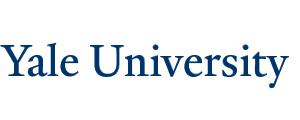
Nova’s Making Stuff and Making More Stuff
The MAKING STUFF projects are holistically designed to incorporate both the open-ended pedagogical structure of making, as well as following the core ideas of engineering design that are outlined in the Next Generation Science Standards (NGSS). Levitating trains. Self-driving cars. Wing-flapping hummingbird drones. Supercomputing machines. Fish slime stronger than bulletproof Kevlar. Ultra fast sailboats. Bomb-sniffing plants. Firefighting goo. Swarms of flying robots. Civilization is built on the human ability to invent—to create new materials and technologies from Earth’s raw materials. What will the stuff of the future be made of?
Making Stuff Website
Making More Stuff Website

NISE Network- NanoDays
For the last few years, CRISP has participated in NanoDays, funded by the Nanoscale Informal Science Education (NISE) Network. CRISP has used these demos during the annual NanoDays week as well as part of various informal science outreach events. NanoDays is a nationwide festival of educational programs about nanoscale science and engineering and its potential impact on the future. NanoDays events are organized by participants in the Nanoscale Informal Science Education Network and take place at over 250 science museums, research centers, and universities across the country from Puerto Rico to Hawaii. NanoDays engages people of all ages in learning about this emerging field of science, which holds the promise of developing revolutionary materials and technologies.
NISE Network Website
Nanodays Website

NISE Network- Building with Biology
The Building with Biology project is a community of informal science educators, researchers, and scientists dedicated to developing innovative resources, practices and processes to build the capacity of the field to use public engagement with science (PES) activities to extend STEM learning about science, technology, and societal implications through public and scientist dialogue about synthetic biology. In 2016 CRISP was awarded the Building with Biology tool kits.
NISE Network Website
Building with Biology Website

Little Scientists
Little Scientists is a CT Making Stuff Outreach Coalition partner. Founded by Dr. Heidi Gold-Dworkin, Little Scientists has grown into a highly successful organization that provides a hands-on approach to teaching young children, ages 3 to grade 5.

Amity High School, Woodbridge, CT
As part of the CT MAKING STUFF Outreach Coalition, CRISP has fostered a collaboration with Amity High School (AHS). With support from CRISP faculty and staff, students and their teacher, Deborah Day, adopted demonstrations to create materials science-related educational kits (DemoKits) that enrich the existing K-12 curriculum. Over the course of the kit development, the AHS students worked in groups to: master understanding of kit content, create verbal scripts for outreach purposes, design pre- and post- demo activities, utilize and learn new technology skills to create original digital stories, and make lesson plan information accessible on the CRISP website for outreach purposes.
Amity High School Science Research
Strange Matter Exhibit
Demoworks Guide

Southern Connecticut State University, New Haven, CT
Physics professor at Southern CT State University and CRISP EO collaborator, has developed an assortment of sensor and data acquisition resources to use in her physics classes, and are now available for loan to local educators. Some of these materials were showcased at a CRISP PD workshop for 8th grade teachers “Forces and Motion”.

Yale University, New Haven, CT
Sohrab Ismail-Beigi, CRISP researcher and Yale professor, in collaboration with a New Haven high school science teacher, continues to create a set of teaching modules for electronic materials and devices. The goal is the development of teaching modules/kits for secondary school students to broaden their understanding of the evolution of technology, both its history and its practices. The focus of these teaching resources is the materials science aspects that provide a foundation for the technology. These teaching resources were debuted at a professional development workshop for science educators in March 2010 entitled Electronic Materials & Devices.
